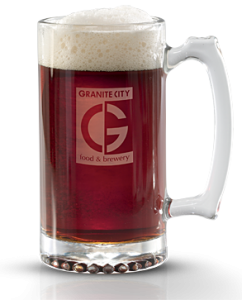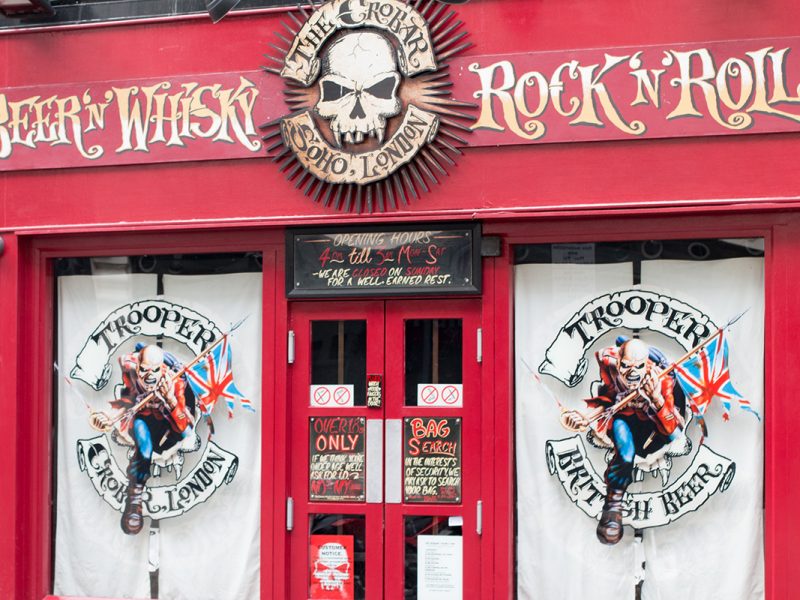 Our local homebrew club had it’s monthly meeting for June at Granite City Food and Brewery, which was the original location for the now sprawling, 34 store, 14 state restaurant chain. Most notable for being an early adopter into the craft beer and brewpub scene back in 1999 when craft beer didn’t even know it was craft beer. It’s a sad revelation to see they’ve failed to keep up with the changing times and tastes, now becoming a tired expression of it’s once proud, craft beer self.
Our local homebrew club had it’s monthly meeting for June at Granite City Food and Brewery, which was the original location for the now sprawling, 34 store, 14 state restaurant chain. Most notable for being an early adopter into the craft beer and brewpub scene back in 1999 when craft beer didn’t even know it was craft beer. It’s a sad revelation to see they’ve failed to keep up with the changing times and tastes, now becoming a tired expression of it’s once proud, craft beer self.
I remember when Granite City opened in town, it was an exciting and heady time. “St. Cloud has TWO brewpubs!” There was one other local brewpub, McCaan’s (the old O’Hara’s Pub), but Granite City presented a much more upscale atmosphere, a higher, fine dining like menu, and a few beer styles that McCaan’s wasn’t offering, much less the local beer distributors. It was a commitment to dine and drink there because it was more expensive, you expected it to taste better. And back in the day, it did.
The food was (and still is) excellent, but as time wore on, the craft beer movement began to march itself inward from the coasts and introduce the masses to what beer could taste like. No more American Light Lager or American Lager (looking, of course, at you, Budweiser, Miller, and Coors). Sure, those 1970’s and 80’s standards were clean, refreshing, and easily drinkable, but they almost universally lacked flavor. Compared to where the craft beer market is now, Granite City has moved itself into that same said position of lacking flavor, or at least memorability.
Admittedly, we’ve become a nation of super hoppy IPA’s, high gravity imperial stouts, and face puckering sours cravers. As craft beer enthusiasts, we have experienced a much wider range of taste extremes in beers, styles, and possibilities. Don’t get me wrong, I’m not looking at brewpubs to cater to all of us hopheads or Belgian tripel aficionados, but if you’re going to label a beer a German Lager, it should taste like a German Lager, not a flat, overly sweet brew that doesn’t come close to the style.
 I partook in the Bennie (a bock – or German Lager, depending on where you looked) and The Duke, a pale ale. The Bennie seemed closer to a Munich Dunkel, soft and very caramely, low on the hops but this beer was overly sweet, drowning out almost all other possible roasted flavors. I was expecting The Duke to feature a more prominent stage for hops to shine but nearly all of the flavor profiles for this beer were flat lined. Medium bitterness, slight creamy mouthfeel, and a lack of hop notes, whether Fuggle/earthy like or American citrus/pine, made me think this would be better suited as an English bitter.
I partook in the Bennie (a bock – or German Lager, depending on where you looked) and The Duke, a pale ale. The Bennie seemed closer to a Munich Dunkel, soft and very caramely, low on the hops but this beer was overly sweet, drowning out almost all other possible roasted flavors. I was expecting The Duke to feature a more prominent stage for hops to shine but nearly all of the flavor profiles for this beer were flat lined. Medium bitterness, slight creamy mouthfeel, and a lack of hop notes, whether Fuggle/earthy like or American citrus/pine, made me think this would be better suited as an English bitter.
Maybe Granite City is playing things safe by not pushing the boundaries, focusing on appeasing the majority of their customers, who might not be informed beer drinkers. I’m aware that certain flavor spikes can scare many people away from craft beer (like sours or hoppy beers) but when it comes to informed imbibers, these beers become mere shadows of the styles they purport to be.
Don’t get me wrong, I’m not out to whole-heartedly trash all everything they do. I appreciate their Broad Axe stout (although it could use a little more roast in my book), and the Batch 1000 double IPA is ok, but for the most part, their beers tend to be merely “meh”, nothing I would crave or suggest to other to seek out.
I do wonder though if their Fermentus Interruptusâ„¢ process of making wort off-site, delivering it to the stores for pitching and fermentation was an ingenious way to skirt the legalities of shipping beer (wort + yeast) across state lines, might have something to do with the muddying of possible intended flavors. Would transporting wort, and the time between the boil and fermentation starting, cause such changes or flattening of the beers characteristics? I don’t have deeper insight to the process to know otherwise, but I do wonder.
Granite City does a decent job as a brewpub, but with the speed of change, the evolution of the mainstreams palettes, and other, more flavorful and impressive options out there, I don’t see them as being the industry leaders they once were in the craft beer brewpub market. Still the cheapest 22oz. mugs for members though, they’ve go that going for them.



